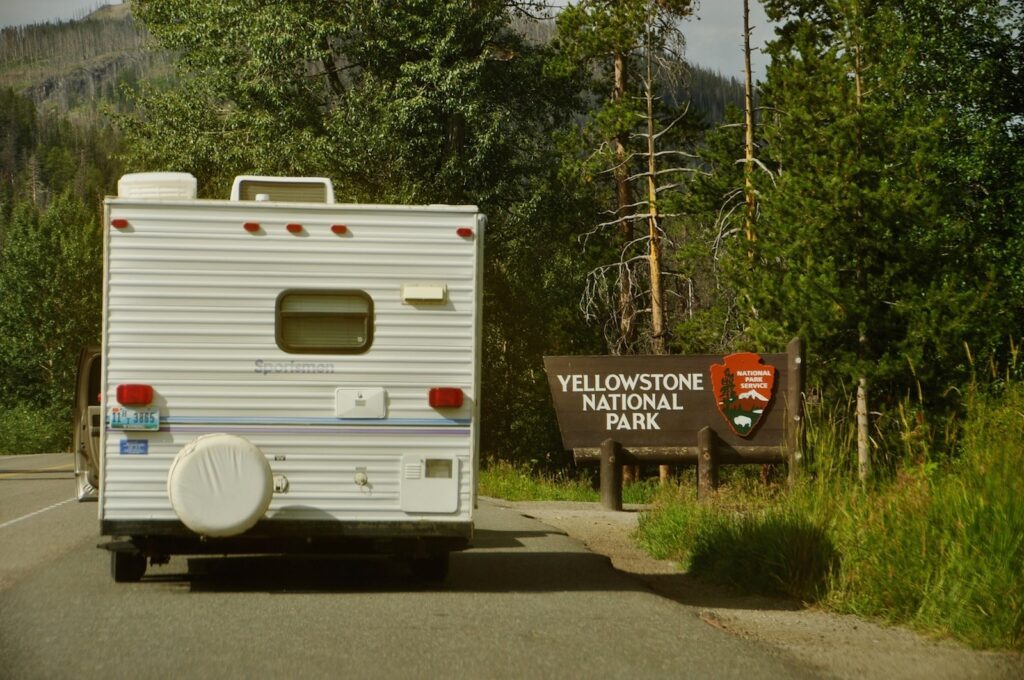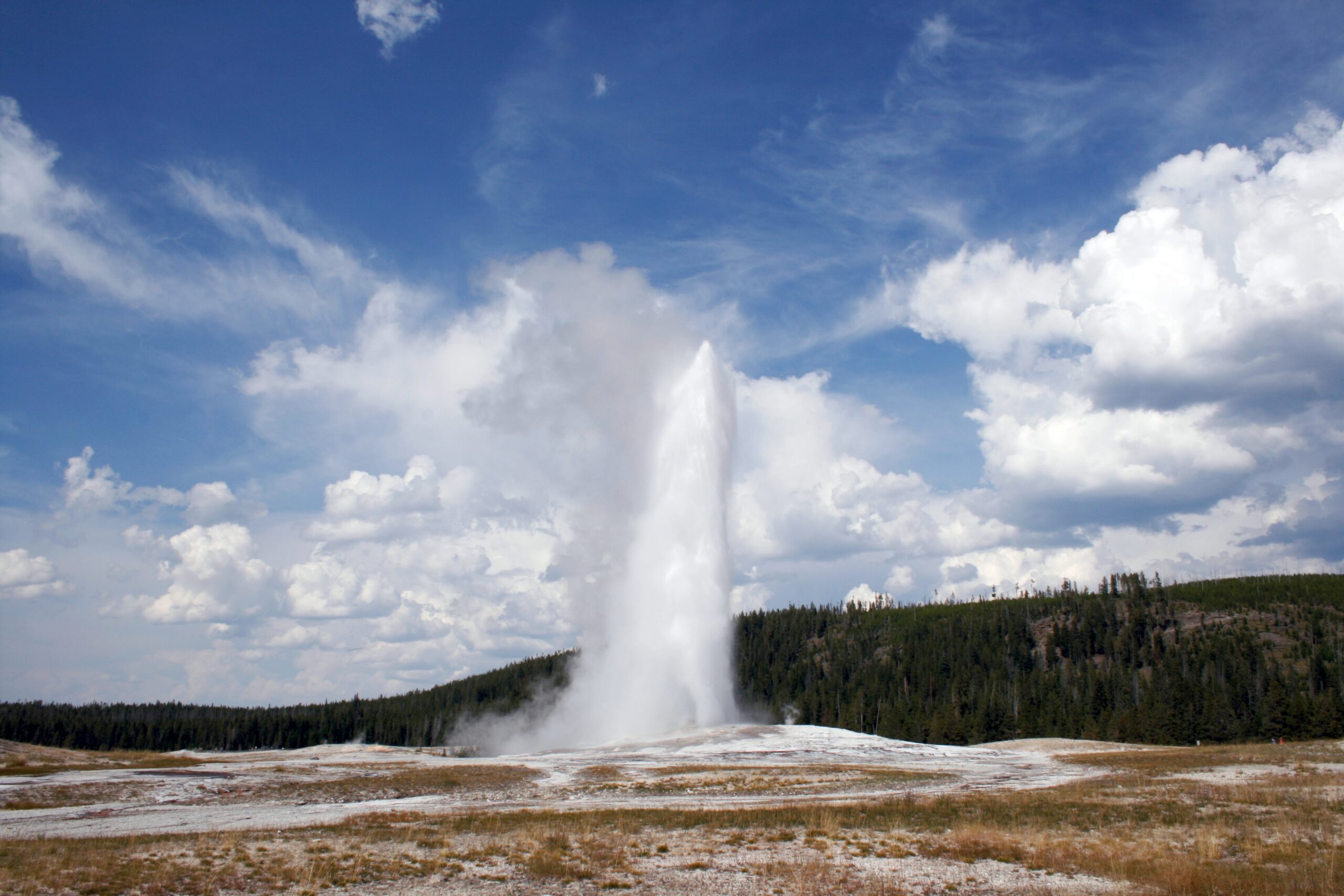. 
Visit The First National Park in the U.S.
Did you know Yellowstone is the first national park in the US? It was established in 1872. The 2,219,791-acre park stretches across three states—Idaho, Montana, and Wyoming—and is known for its wildlife as well as famous geothermal features like Old Faithful Geyser.
Yellowstone is open year-round, with the busy summer season being frequented by tourists, and the winter season with fewer people but beautiful snowy views and experiences. As with all National Parks, please check Yellowstone National Park’s website for updates regarding current alerts and closures.
Yellowstone park history
Despite only becoming a National Park 148 years ago, Yellowstone’s history actually dates back much farther—11,000 years to be exact, when Native Americans inhabited the park. Archeological sites and objects in the park now show the history of these original dwellers as well as those who came after. Wilderness explorers came through the park during the early-to-mid-19th century and more formal explorers in the 1860s.
Visiting Yellowstone
There are a few different pass options available for visiting Yellowstone. Purchase a digital pass on Recreation.gov before you arrive for ultimate convenience which can then be displayed on your phone or tablet.
For those making a one-time visit, a week pass is good for entry into Yellowstone for seven days from the date of purchase and ranges from $20-$35 based on your mode of transport. An annual pass provides entrance into Yellowstone for one year and costs $70.
Both types of passes are sold at all entrances but be aware that if entering the South Entrance, you will travel through Grand Teton National Park first, which has separate entrance fees. These entrance fees are key to maintaining this national treasure; entrance fees provide $8.8 million each year for improvements to the park.

Yellowstone camping. Photo via Flickr Creative Commons
Yellowstone camping & lodging tips
Yellowstone National Park has 12 campgrounds with over 2,000 sites. Five of these campgrounds take reservations: Bridge Bay, Canyon, Grant Village, Madison (none have hooks ups but all have dump stations), and Fishing Bridge RV Park which is closed for all of 2020.
The other seven campsites are first-come, first-serve. These are Indian Creek, Lewis Lake, Mammoth, Norris, Pebble Creek, Slough Creek, and Tower Fall, all of which have different specifications for sizes of RVs, vehicles, and trailers allowed. Yellowstone also has backcountry campsites for those wishing to hike and backpack. The campground at Mammoth is open year-round and is your only option for RV camping in the park in winter.
If you’re looking for a break from camping, check into one of Yellowstone’s nine lodges, available in both hotel- and cabin-style. All are open late spring through fall, while only Old Faithful Snow Lodge and Mammoth Hot Springs Hotel are open in the winter. The other lodges include Canyon Lodge and Cabins, Grant Village Lodge, Lake Hotel and Cabins, Lake Lodge Cabins, Old Faithful Inn, Old Faithful Lodge, and Roosevelt Lodge.
If you are looking for free camping in Yellowstone, check out these 11 free campgrounds recommended by Drivin & Vibin:
What to see in Yellowstone
There’s so much to see, do, and explore in Yellowstone National Park, it might take you a lifetime to take it all in. There’s hiking, wildlife viewing, camping, fishing, boating, biking, horseback riding, skiing, snowshoeing, snowmobiling, snowcoach rides, and guided tours.
In addition to activities, there’s also a slew of locations to be sure to visit on your trip. The most famous of these is Old Faithful, one of nearly 500 geysers in Yellowstone. This and other geothermal wonders are what inspired the establishment of Yellowstone in the first place. Old Faithful is one of only six geysers that can be predicted in the park; you can watch the daily eruptions in person or live via webcam.
Another must-see is the Grand Canyon of Yellowstone (not to be confused with the more famous Grand Canyon). At roughly 20 miles long, this canyon starts at Upper Falls and continues to Lower Falls and Crystal Falls.
In every part of the park, there are natural wonders to see. Visit Yellowstone Lake or Fishing Bridge near Bridge Bay; hydrothermal wonders and Fairy Falls in the west; Mammoth hot springs and historic Fort Yellowstone in the north; dine at an old west cookout in the northeast; or visit the West Thumb Geyser Basin in the south.

Plan your Yellowstone camping trip
For better planning of your trip through Yellowstone, download the free National Park Service app, which allows you to explore the park by map, topic, or interest. You’ll learn about the history of the park. And get information regarding visitor centers, events, lodging, places to eat and shop. Use it along with the RV LIFE App and RV LIFE Trip Wizard. Discover all of the great Yellowstone campgrounds, RV parks, gas stations, and other points of interest in the area.
Been to a campground lately? Don’t forget to leave a review! Reviews help other RVers like yourself, and they help the campground. Leave a campground review today!

Beautiful place…but go early in the morning or after dinner: both times crowds aren’t so bad.
Campground information is far outdated: Fishing Bridge now has full hookups and is open; all campgrounds require reservations, reservations may be made 13 months in advance.
We stayed at Colter Bay rv resort next to Jackson Lake as base camp then unhooked the coach and went site seeing each day a different place around the base camp, Yellowstone included.